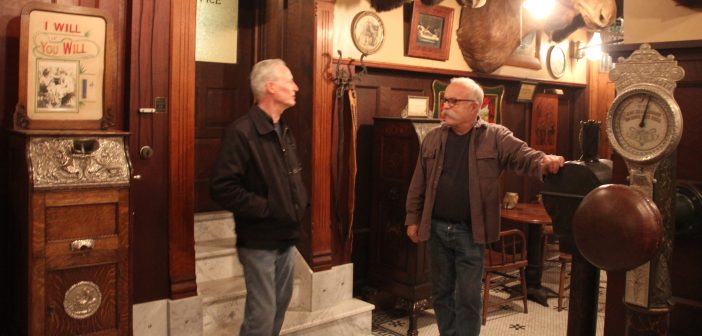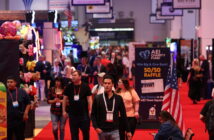Early Days of Coin Machines
A Trip Back In Time to Learn About Trade Stimulators
People in the trade today operate equipment that seems very far removed from the coin machine industry of yesteryear. The coin-operated phonograph has given way to the digital downloading jukebox, and even the ubiquitous coin is giving way to cashless payment systems. But, way back in the day, around the turn of the century (1800s to 1900s, not Y2K), “trade stimulators” were all the rage.
These machines with coin slots did just what you’d think: they stimulated trade. Games were played on these sometimes quite ornate units, a lot of them dice and card related, and the winner would be rewarded with a gumball, a token or a reward (maybe a cigar, drink, etc.) given directly by the proprietor, sales person or bartender. The idea was to get the customer to spend more time –– and money –– in the location, whether it was a saloon, cigar shop, hotel lobby or ice cream parlor. And it worked.
In fact, it was the trade stimulator that first stimulated this magazine feature and companion video series. We had been noticing beautiful antique coin machines in social media posts by Mantiques Network partners Jeff Walker and Jim Schafer. We thought it would be great to introduce readers, especially the younger members of the trade, to the industry’s history by talking about these old machines.
In January, RePlay caught up with Jeff and Jim at the beautiful Pasadena, Calif., Victorian home of Roger Kislingbury, a collector and respected authority on trade stimulators and lover of all things related to the American saloon. He’s the author of two “bar top” (“coffee table”) books, the latest is American Saloons: Pre-Prohibition Photographs with page after page of never-before-published pictures.
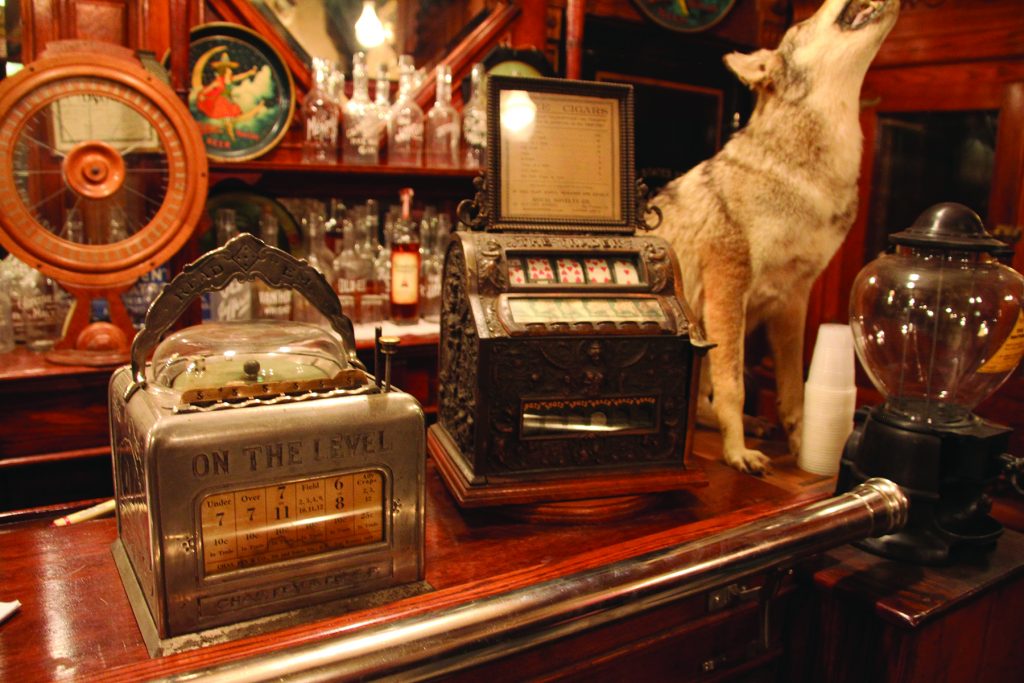 Entering his home set the stage for a day full of fun and history: No front door for us, but a winding path along the side of the house and down some stairs through his workshop to an authentically reproduced turn-of-the century saloon. A labor of love lasting years, the saloon was dug out of the space under the home and filled with historically accurate pieces. The bar itself was built in 1887; every light switch, bathroom fixture, piece of glass or hardware, etc., is authentic to the period. We truly stepped back in time.
Entering his home set the stage for a day full of fun and history: No front door for us, but a winding path along the side of the house and down some stairs through his workshop to an authentically reproduced turn-of-the century saloon. A labor of love lasting years, the saloon was dug out of the space under the home and filled with historically accurate pieces. The bar itself was built in 1887; every light switch, bathroom fixture, piece of glass or hardware, etc., is authentic to the period. We truly stepped back in time.
On the counters and along the walls were beautiful trade stimulators from a bygone era. Looking throughout the home you could see a real affection for history, especially old coin machines. Roger started collecting as a young boy and it’s a passion that’s never left him. “I’ve always been in the antique business,” he said, adding that for a time in the 1970s, he also owned a bar in Pasadena (scenes in the movie A Star Is Born were filmed there).
About trade stimulators, Roger said, “It would be a gambling machine or some sort of device that would stimulate the person’s interest and vend you a token. Or often, the bartender would give you a reward in cigars or tokens, which would allow you to buy merchandise at that particular business. Some vended tokens, and some didn’t vend anything at all as far as coins: They simply gave the bartender the option of giving you a reward in tokens or in product.”
The game play was simple. You’d drop a penny in and a ball would start falling down the vertical playfield, deflected by pins and obtrusions until it landed in a pocket along the bottom. Or it might be a dice game or a one in which the player is “dealt” cards and the player is rewarded for having the right poker hand.
These machines were everywhere, Kislingbury said. “They were on the counters in cigar stores, saloons and bars during the turn of the century. That was very popular then. Every store, even ice cream parlors, had a cigar counter, which is kind of funny today, when you think about it. Tobacco products were very popular during the turn of the century and these machines tagged right along with that interest.”
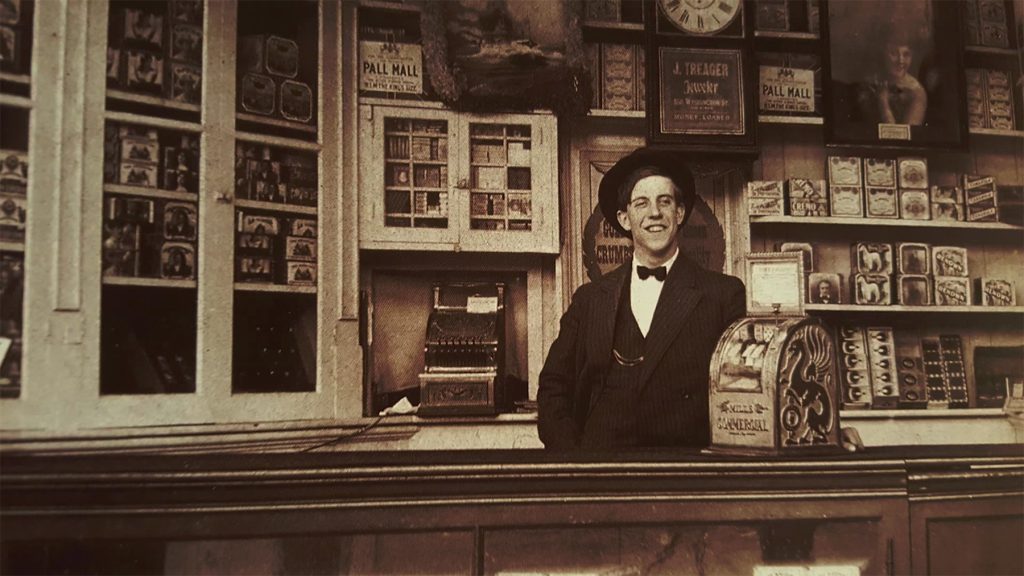
With this Mills Commercial trade stimulator on the countertop, the location would make more money than one without (which certainly might be the reason this fellow is smiling).
“Trade stimulators also paralleled with gambling, because it was really gambling,” he said. “It was kind of getting around the gambling laws. ‘Oh we’re giving you a token so you can go buy a mint or a cigar,’ but in all reality it was gambling.”
Prohibition came along in 1919 and the world of saloons, bars and trade stimulators changed quickly.
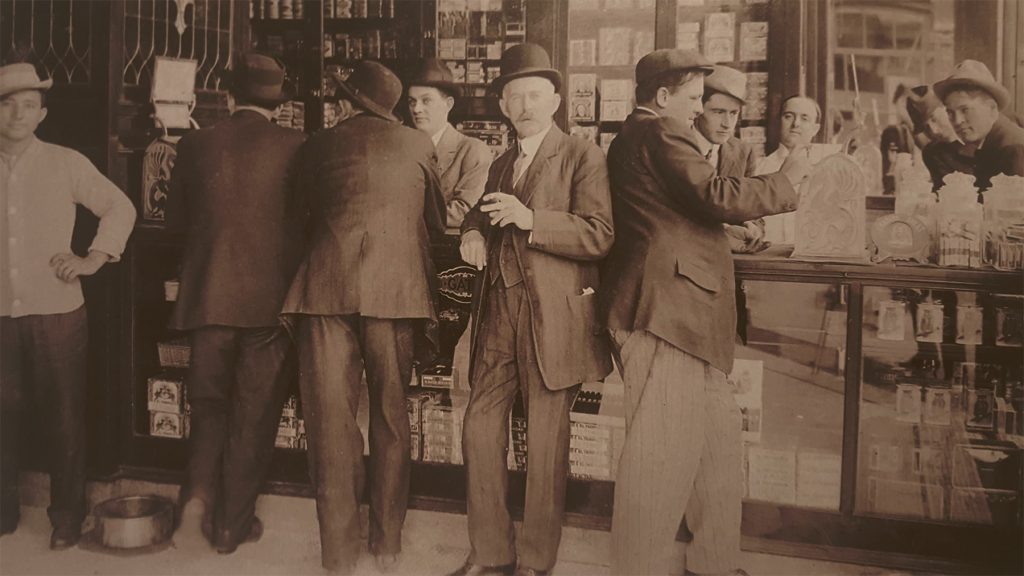 “Prohibition put a major dent in it because all the saloons closed down and the gaming went with it,” Kislingbury said. “In the ’30s, trade stimulators came back, but were made out of aluminum and they weren’t as ornate as the earlier ones. And then the three-wheel slot machine was king in the ’30s … and still is today in an electronic variety.”
“Prohibition put a major dent in it because all the saloons closed down and the gaming went with it,” Kislingbury said. “In the ’30s, trade stimulators came back, but were made out of aluminum and they weren’t as ornate as the earlier ones. And then the three-wheel slot machine was king in the ’30s … and still is today in an electronic variety.”
In the collectors world, prices vary widely. Some go for $650 while others might fetch $3,000. And hold on to your hats, some can go for more than $100,000! Kislingbury said that if the machine is rare and two collectors are butting heads trying to win it at a sale or auction “it could go crazy…and it has!”
To learn more and watch the video, visit www.replaymag.com or the Mantiques Network website at www.mantiquesnetwork.com. (A second and longer video from the visit to Roger’s home and a look at his collection and saloon can be found at www.youtube.com/watch?list=PLGU07ZGm5hZZLgSkCgpGOhR3PCIeMvG99&v=hxuHm1ThpvY.) And hey, you can shop for your own trade stimulator or Roger Kislingbury’s book there, too!
(By the way, the first installment of Machines, Myths and Legends was about the 90-year history of Rock-Ola in the December 2016 issue. The video clip can still be found online).
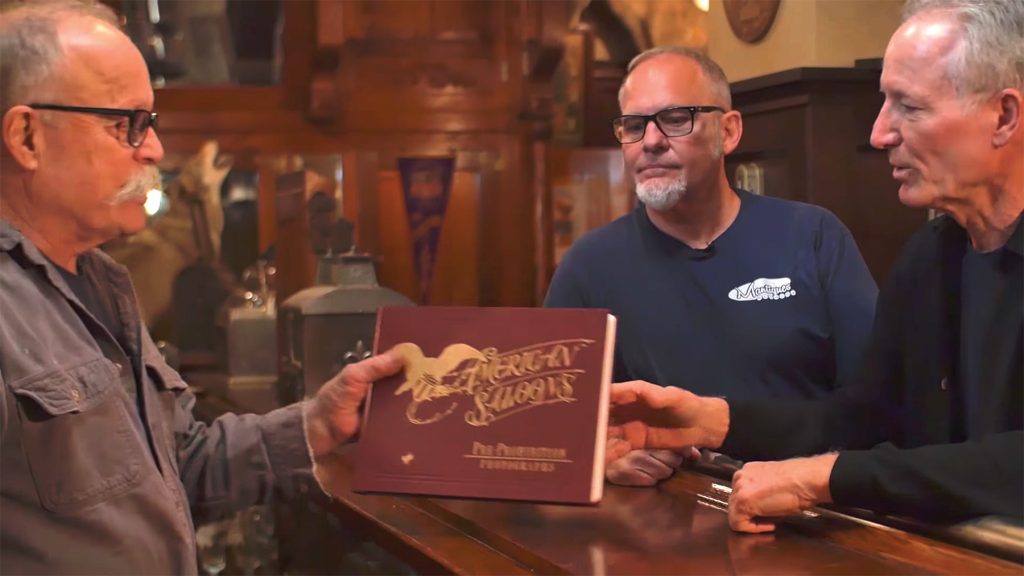
To get a copy of Roger Kislingbury’s book, American Saloons: Pre-Prohibition Photographs, visit www.mantiquesnetwork.com.
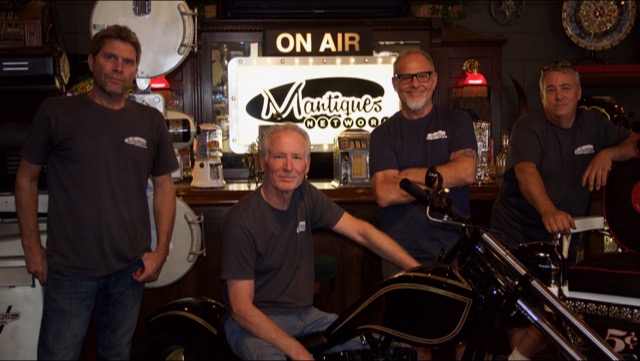
The Mantiques Network’s Tony Ritter, Jim Schafer, Jeff Walker and Jeff Sinclair in their Orange, Calif. HQ.
To read the companion print article, be sure to subscribe to RePlay by clicking on “Get RePlay” tab above. To see what other cool coin-op and non-coin-op “mantiques” Jeff, Jim, Tony and Jeff have run across, be sure to visit www.mantiquesnetwork.com. They have quite a collection of videos on their website, including their “Storytellers” series.

